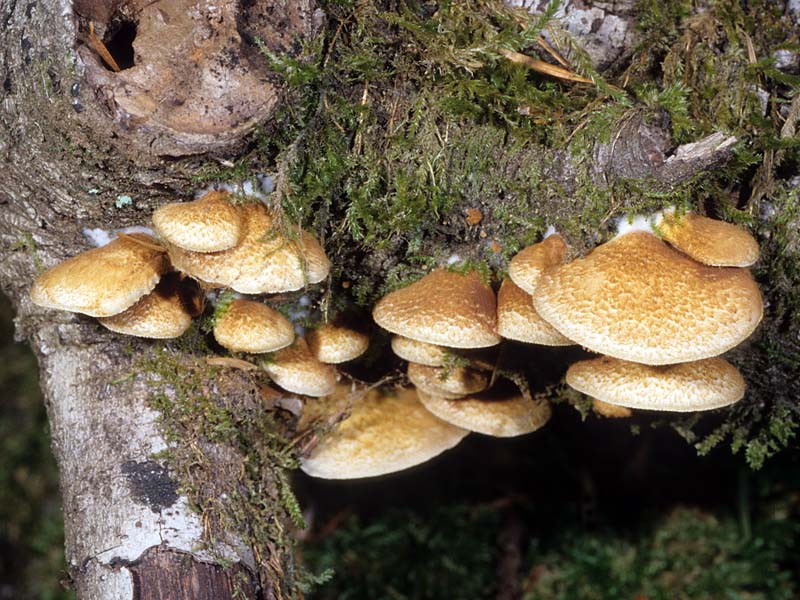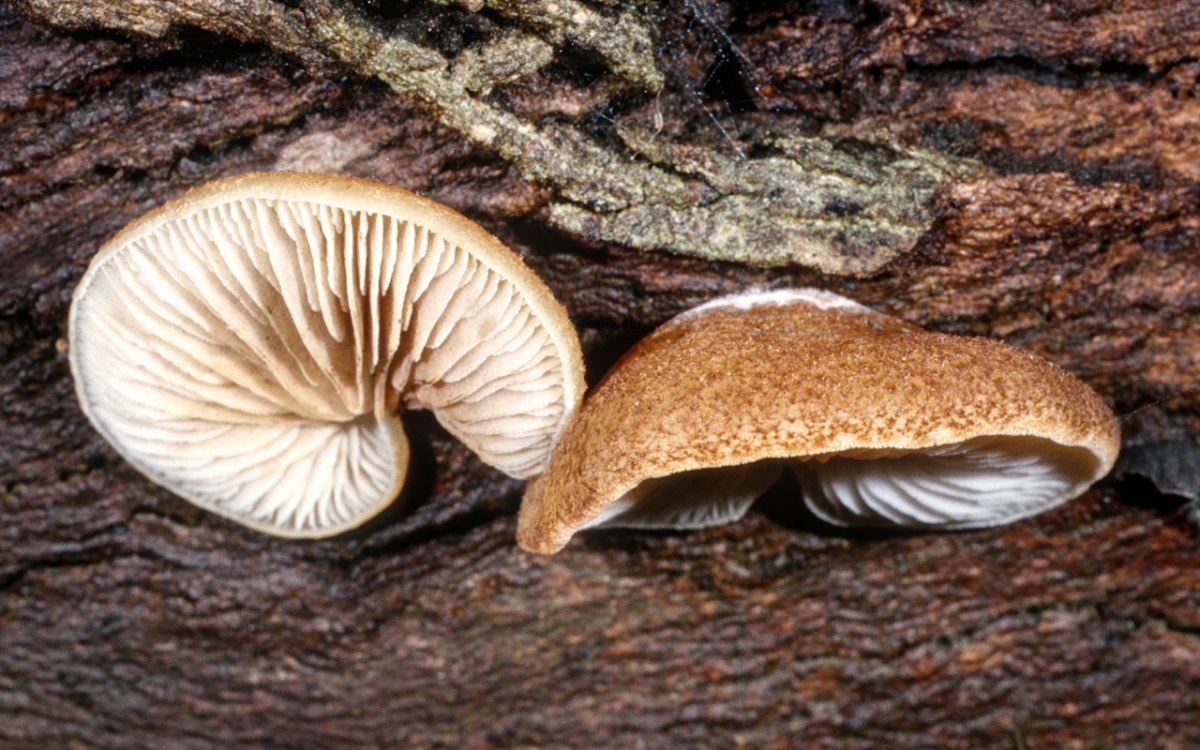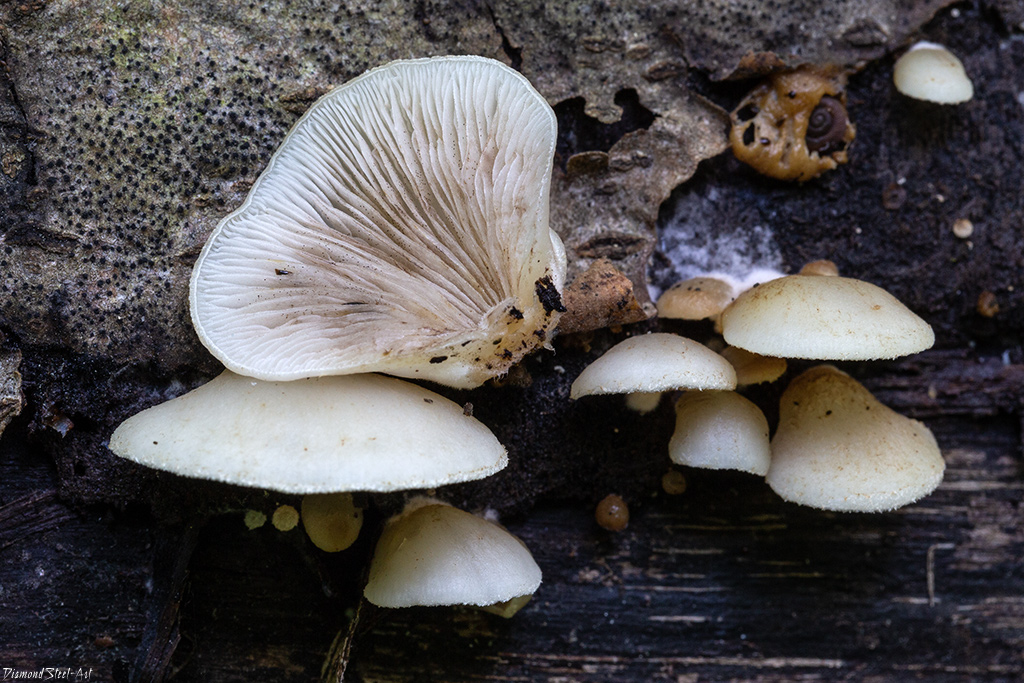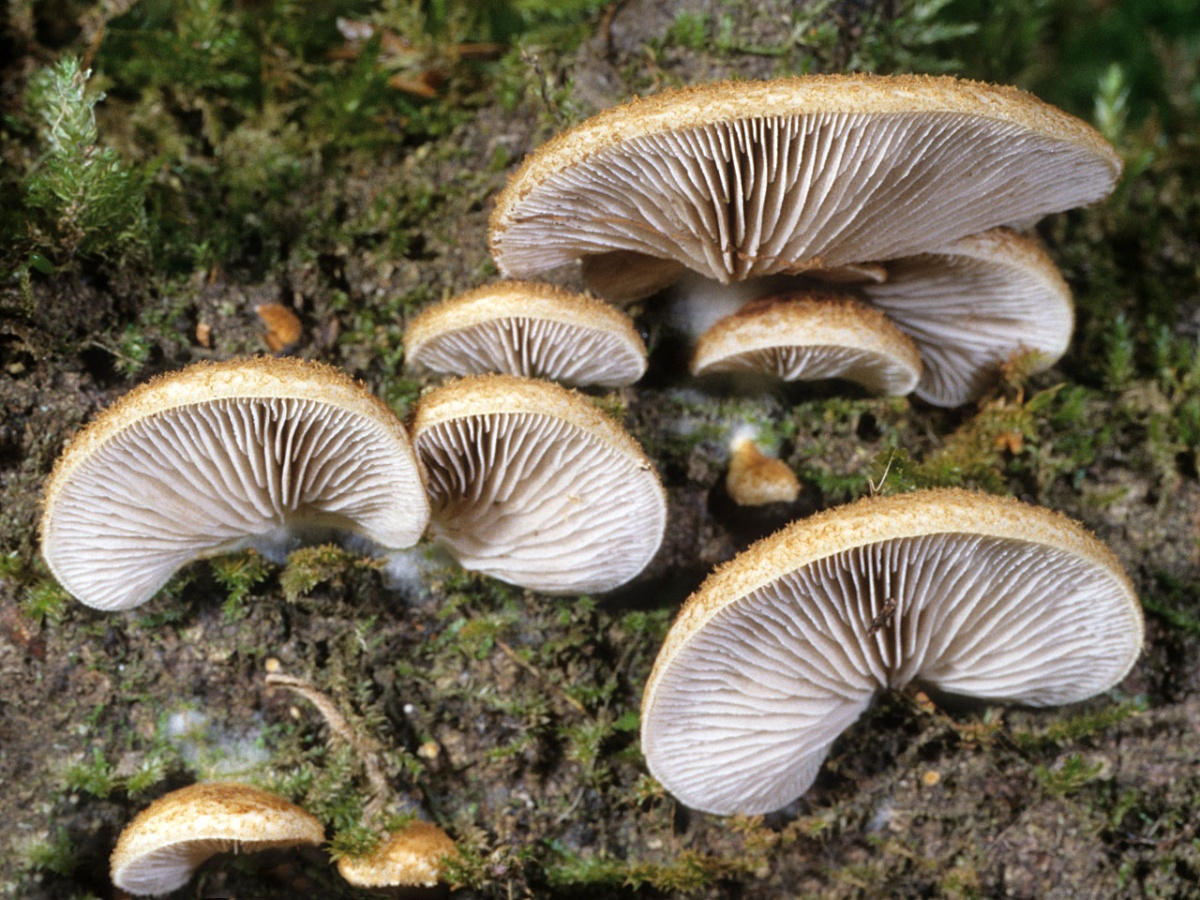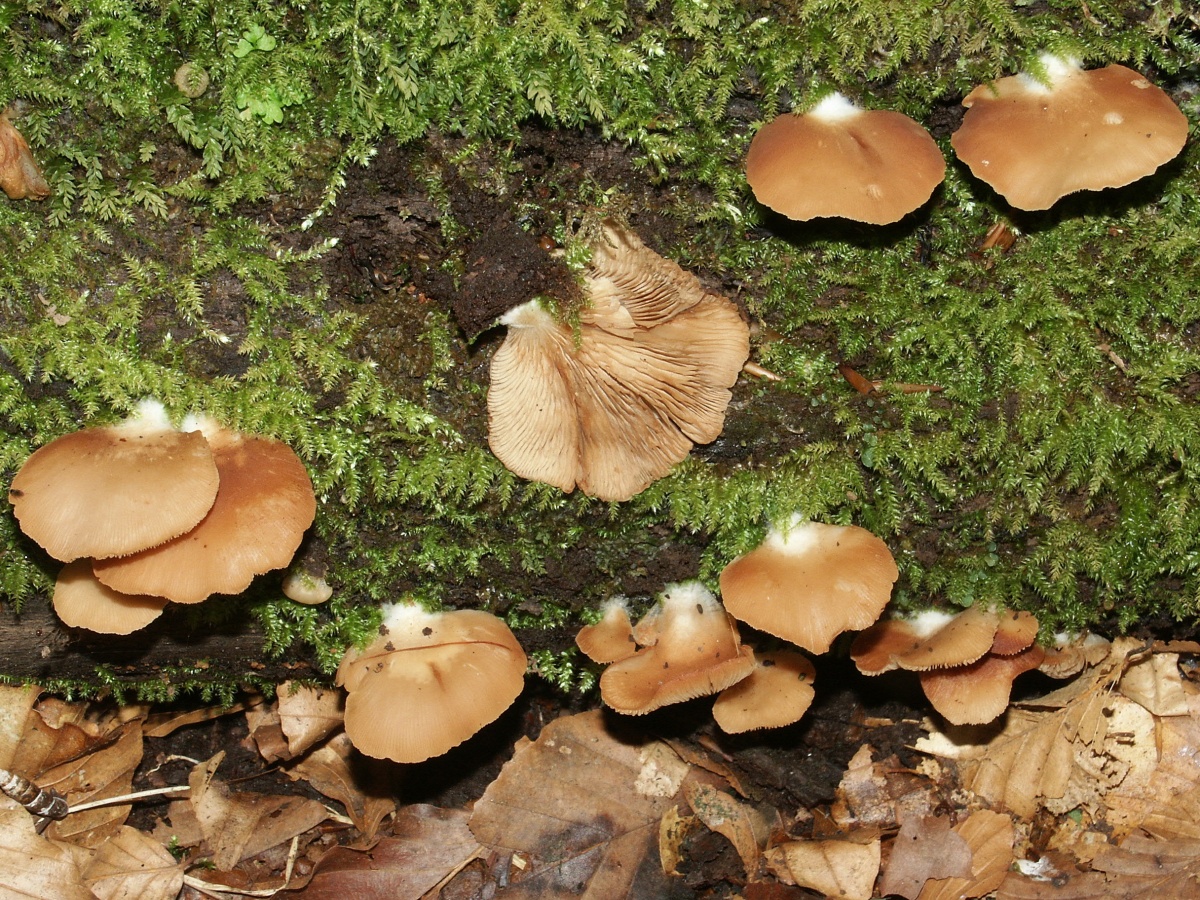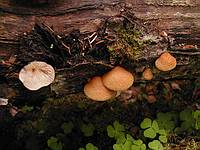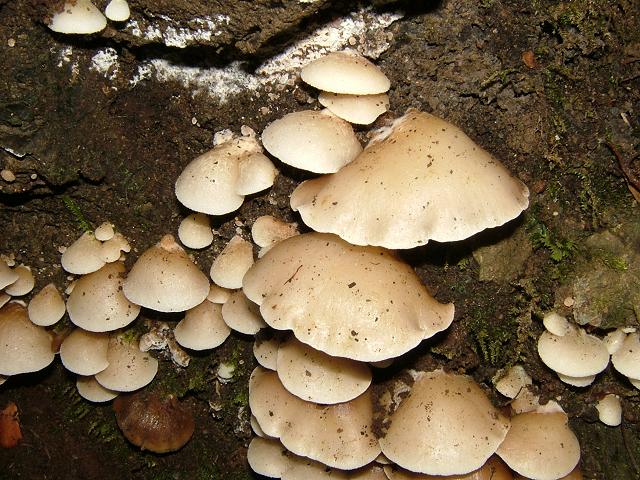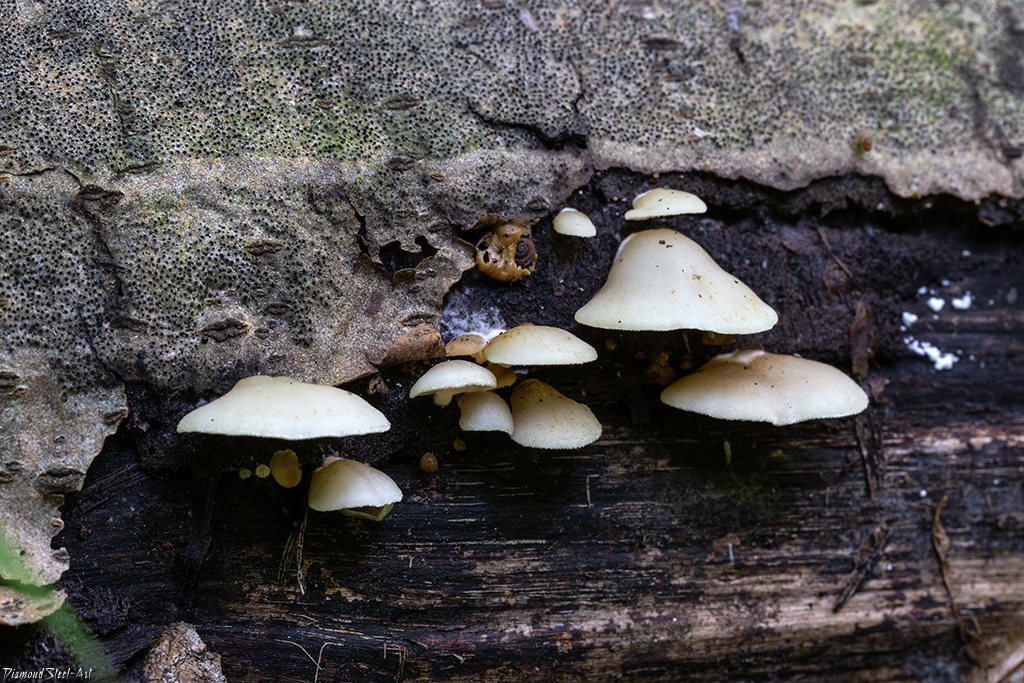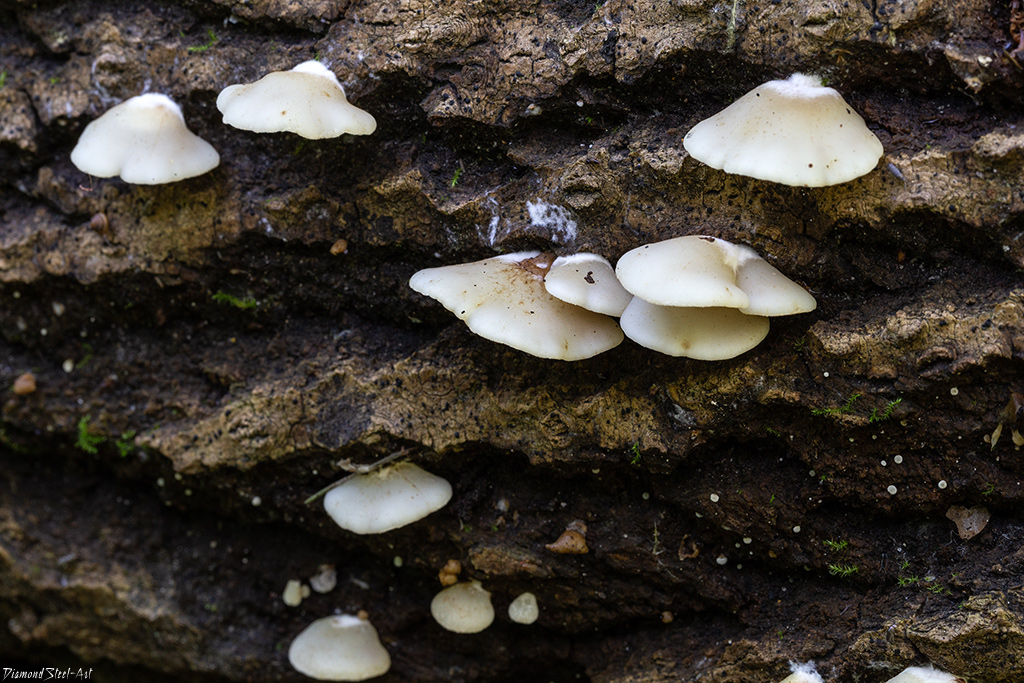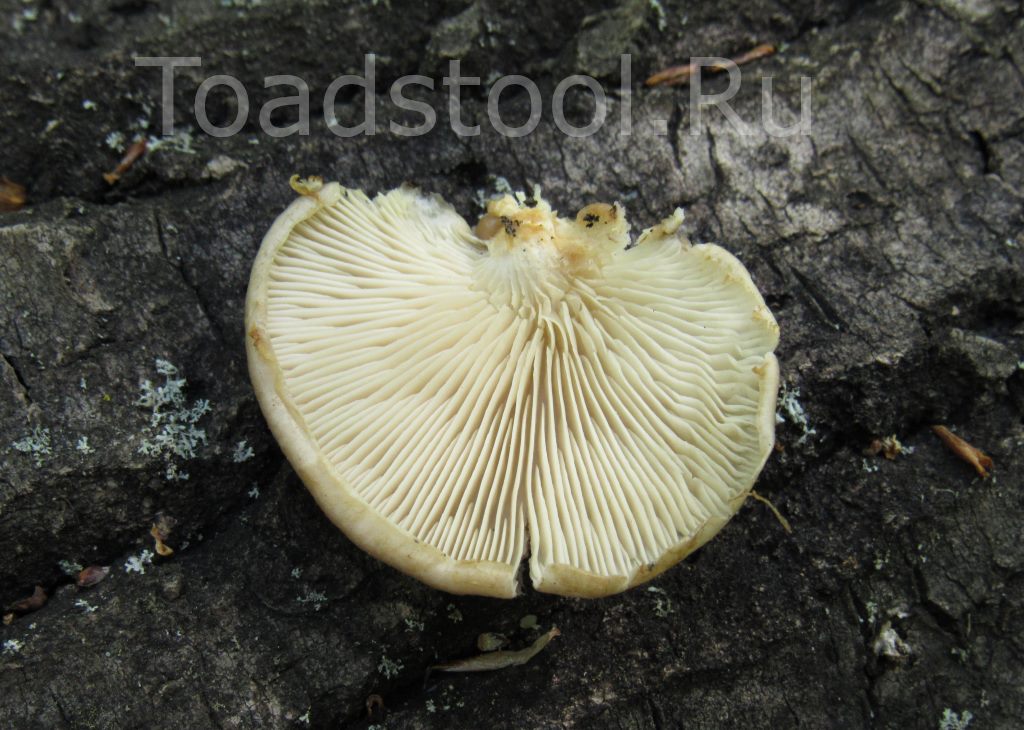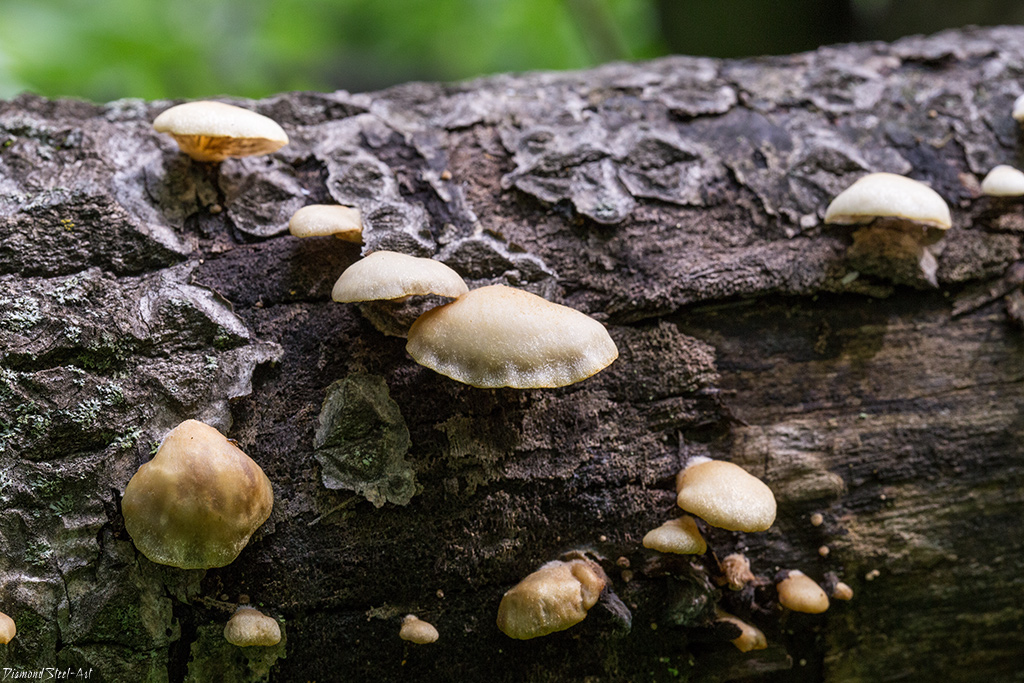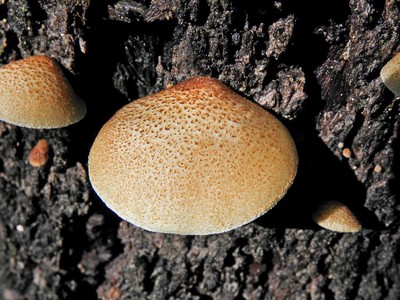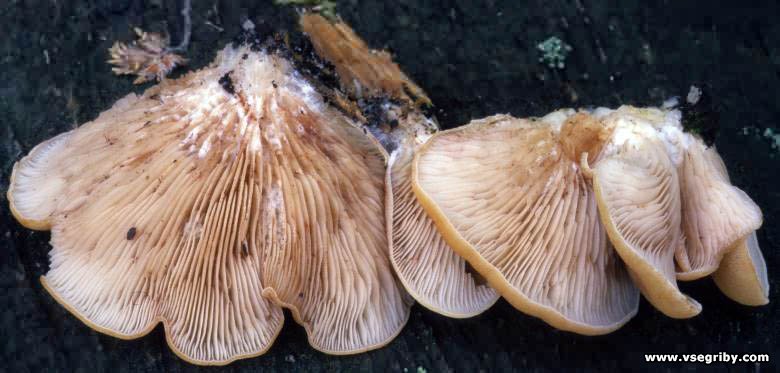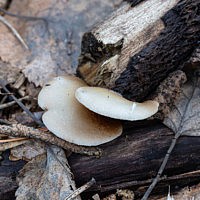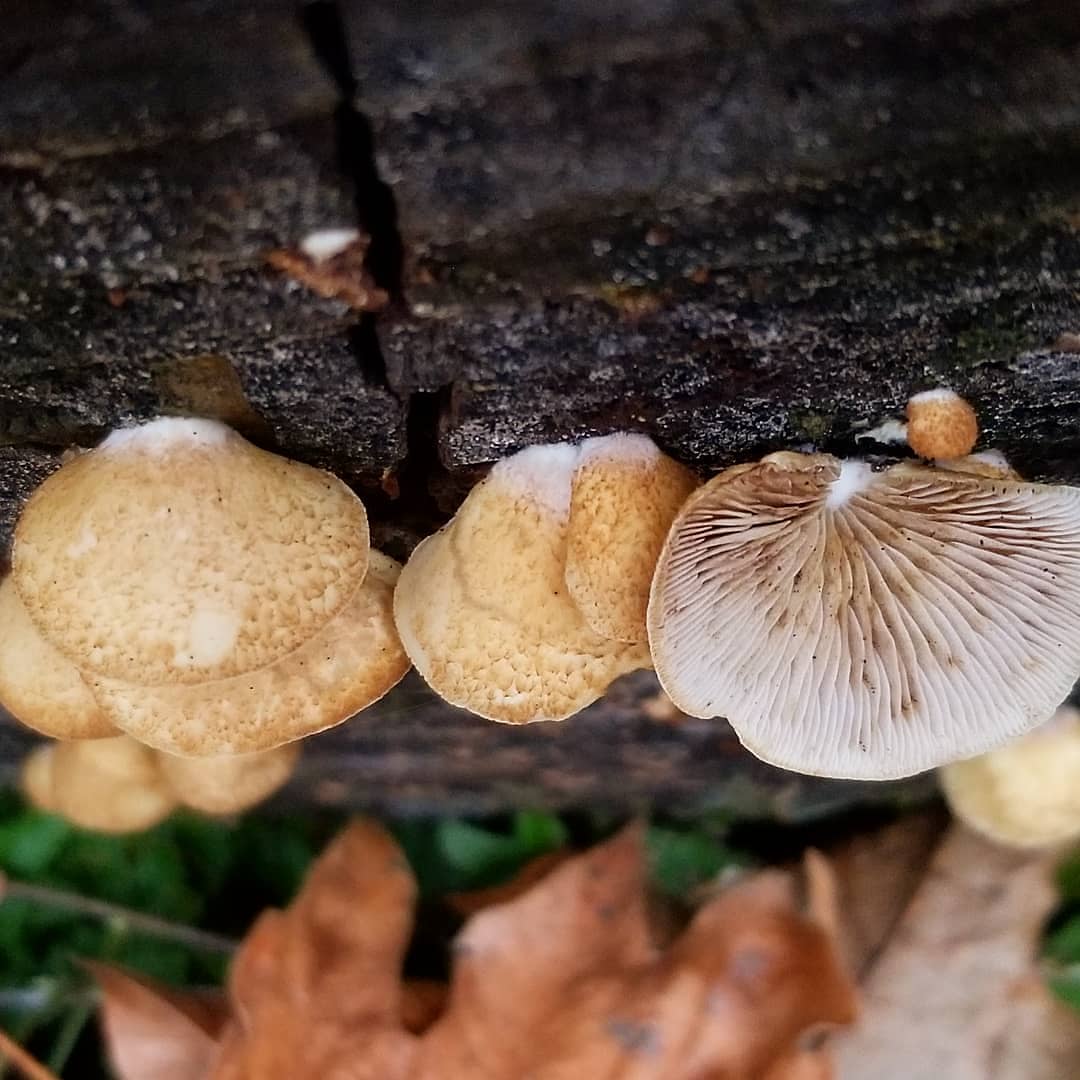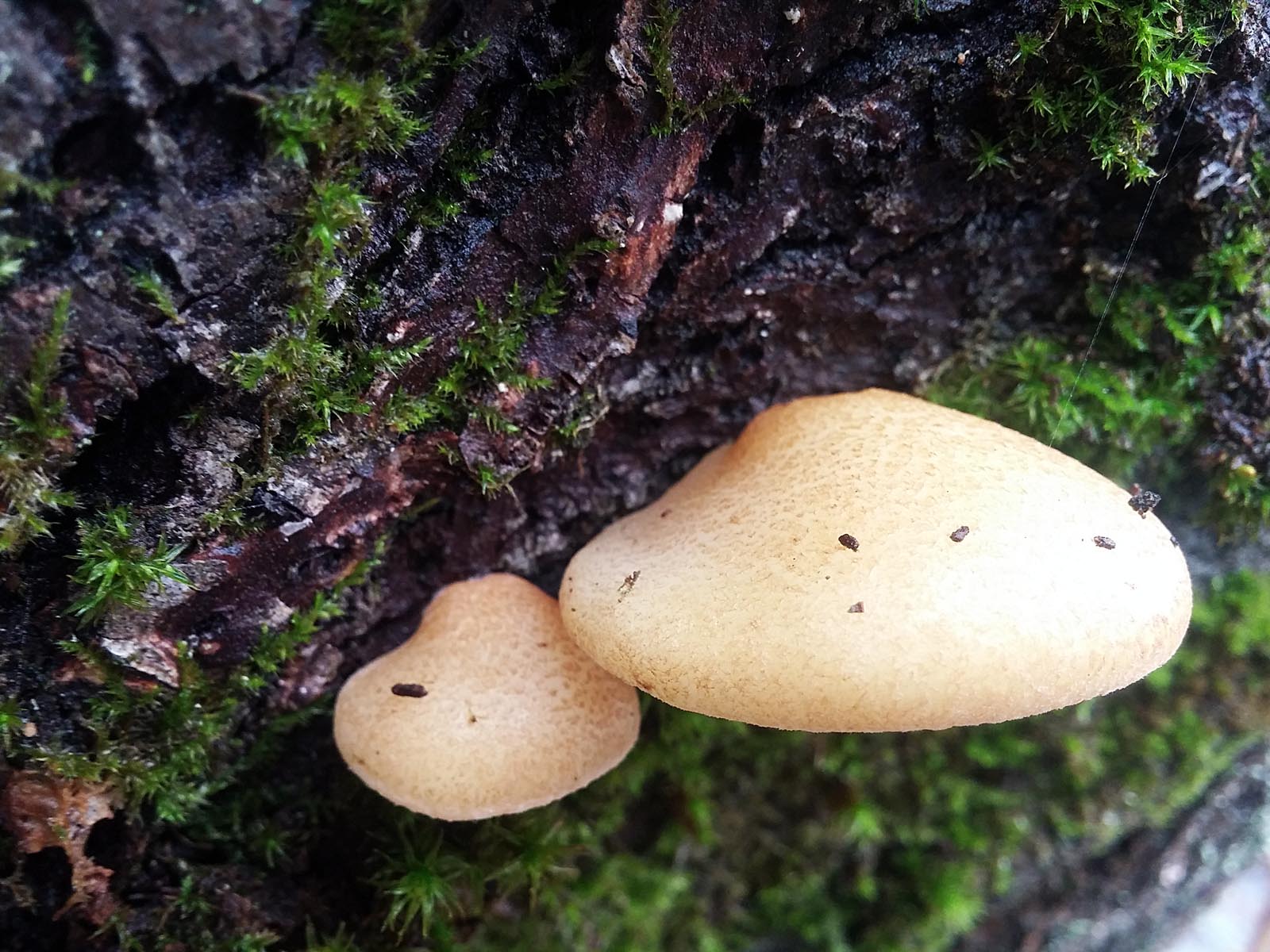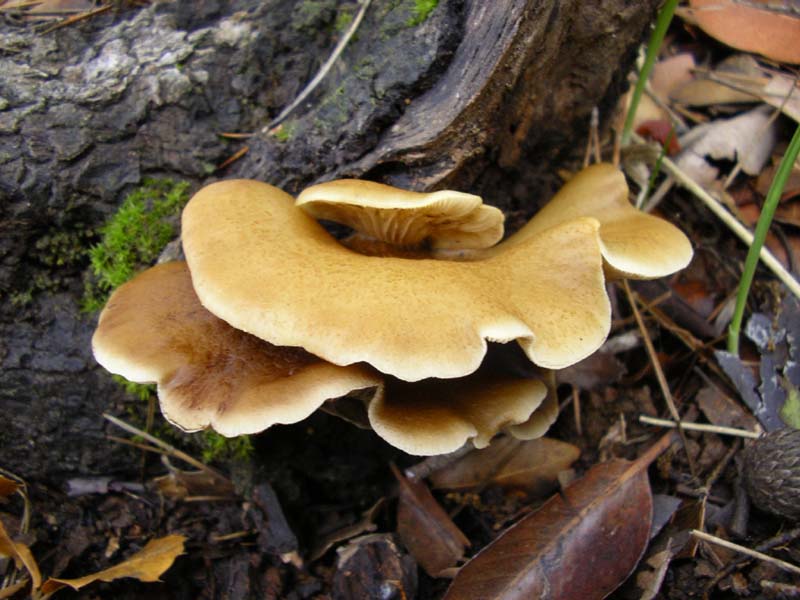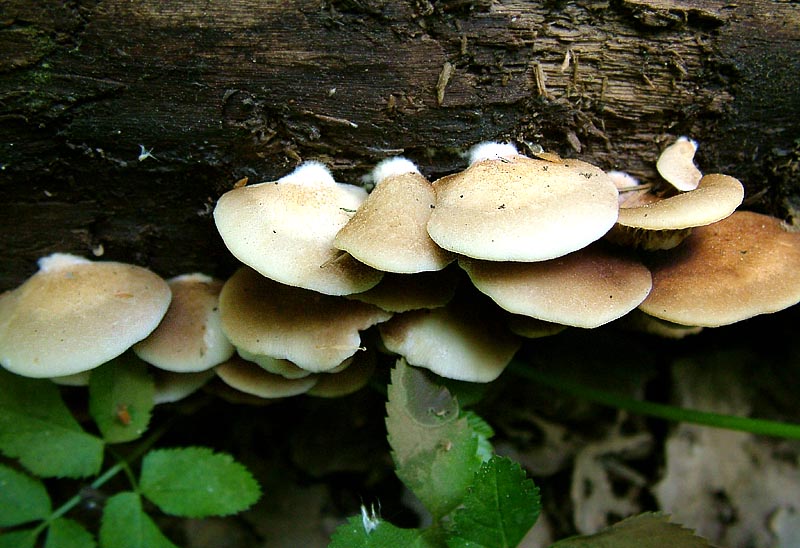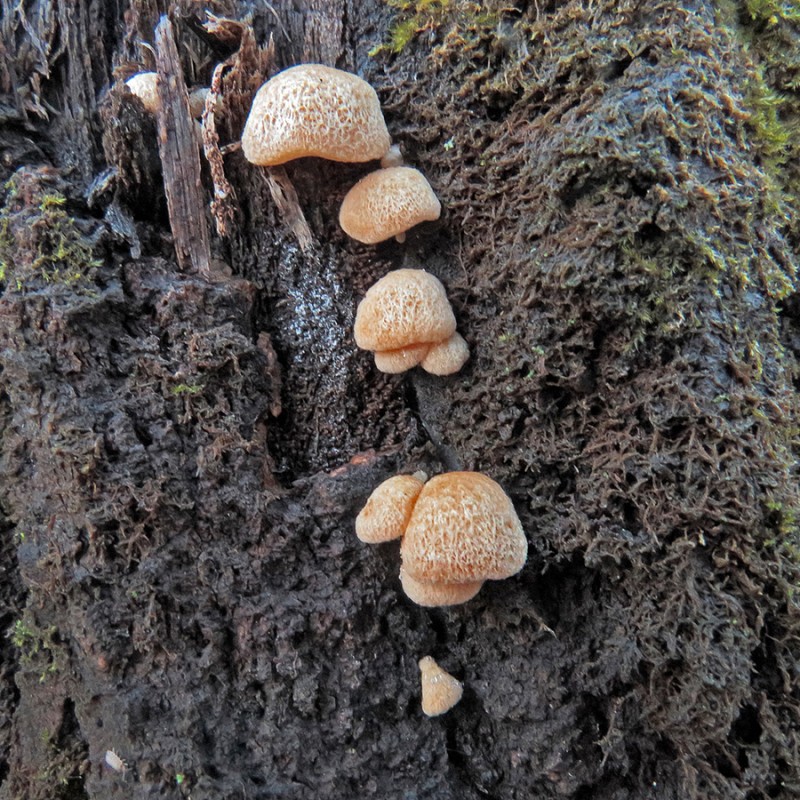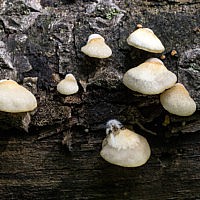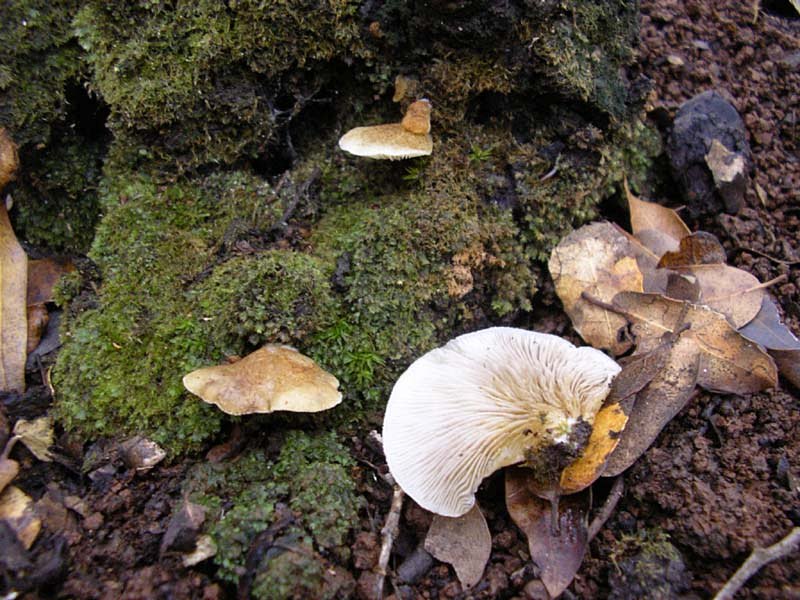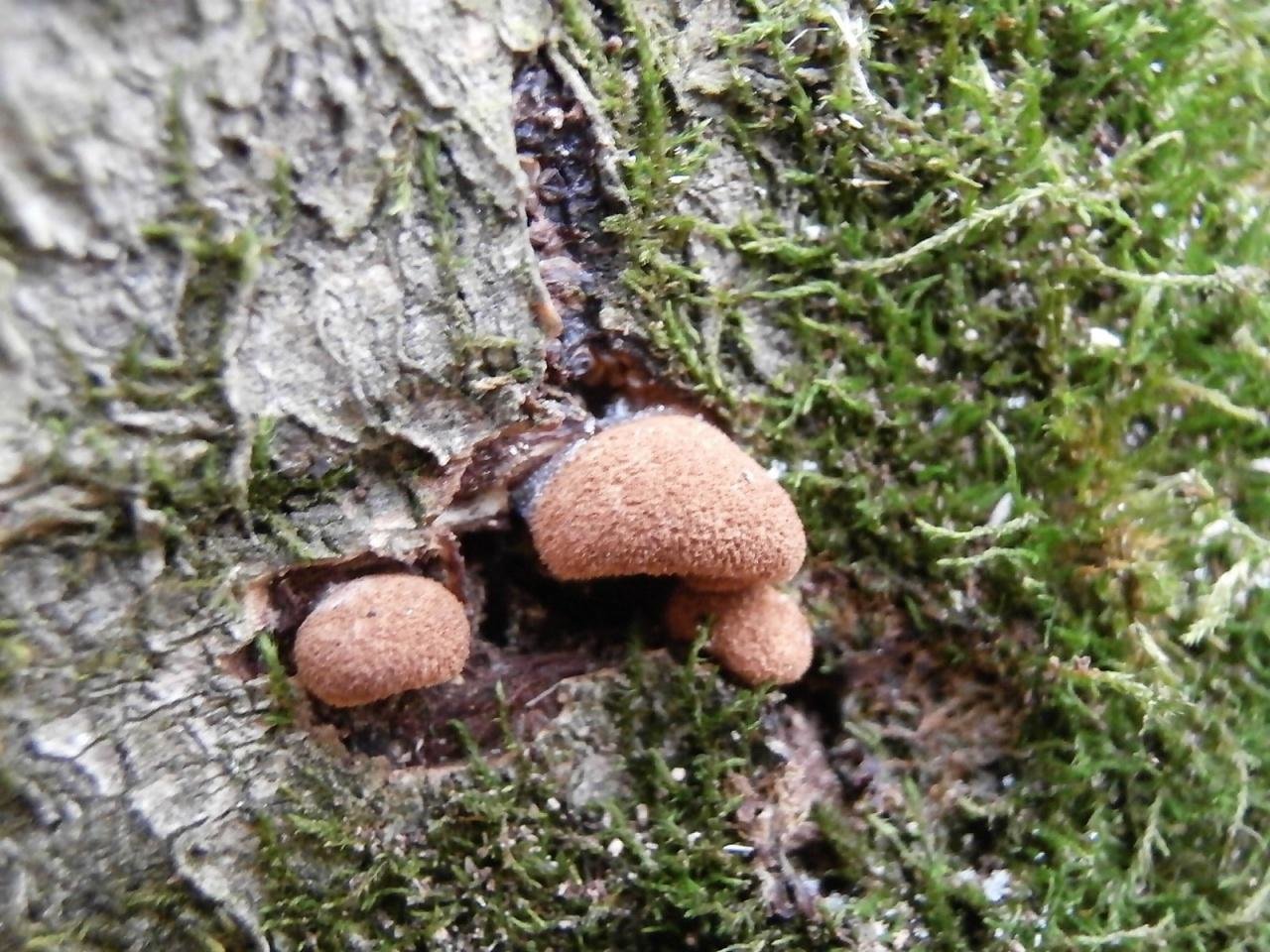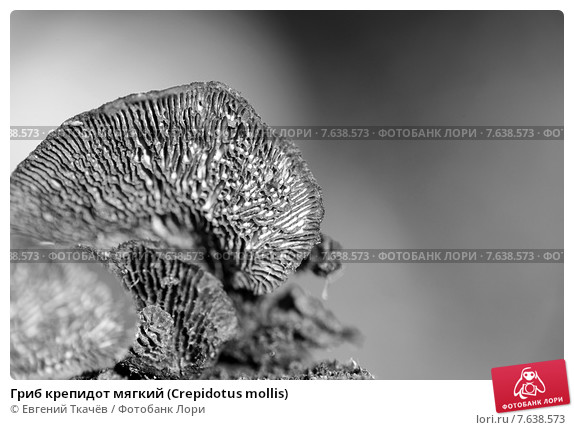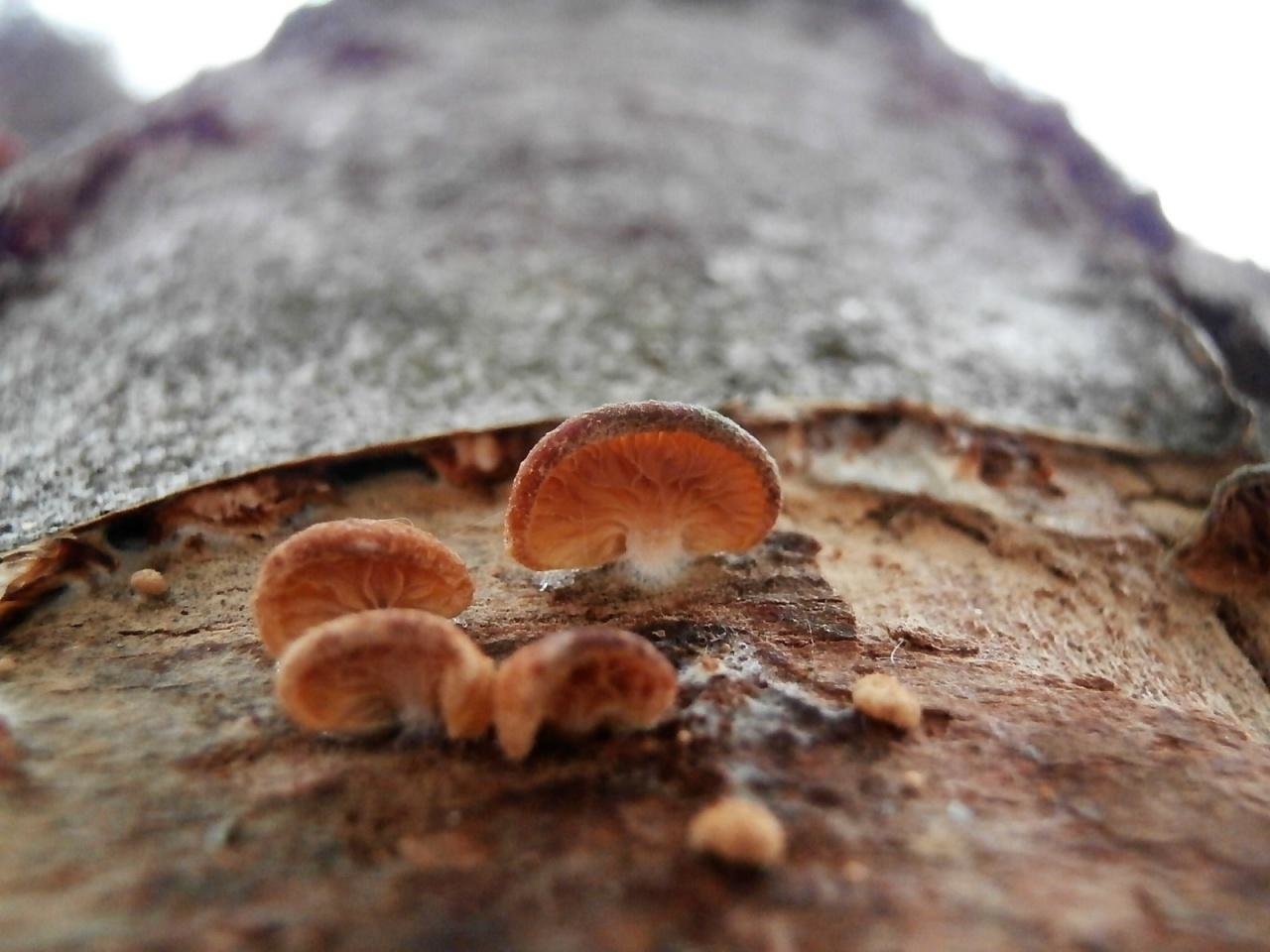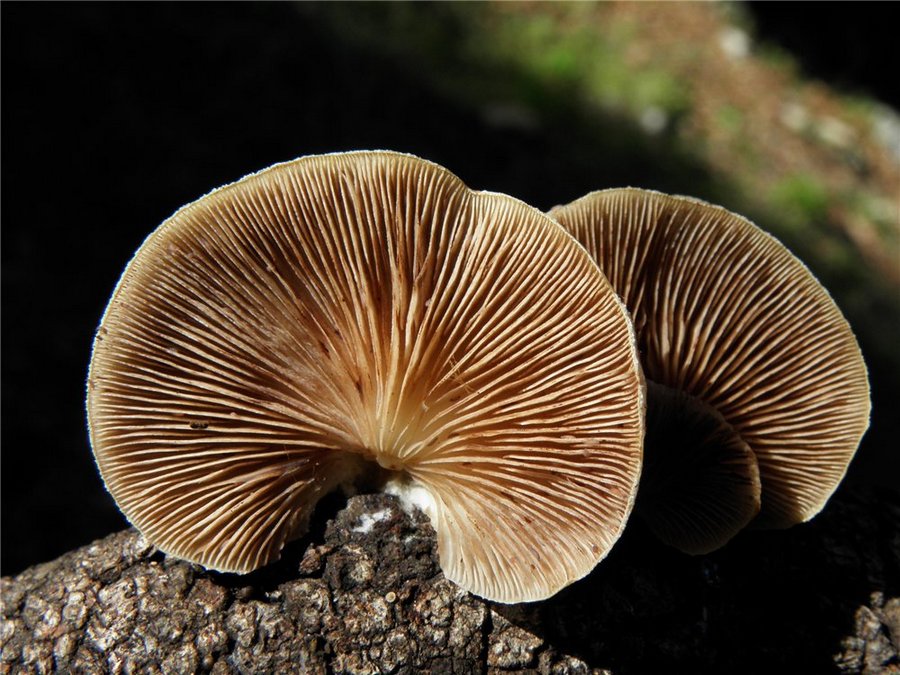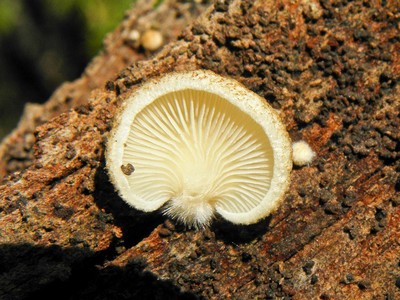Areas of growth of chestnut crepidots.
You can find chestnut crepidotus from May to October, the peak of fruiting occurs in June-July, as well as September. Soft crepidota settle on dead wood... They are found on the branches of hardwood, for example, linden or aspen. Sometimes they can be found in the hollows of living trees. They can also settle on treated wood.

They grow in groups. They are common and bear fruit every year. This species is widespread in the Northern Hemisphere, South America and Africa.
Evaluation of the edibility of soft crepitoda.
Soft crepidote is a little-known mushroom. It can be eaten, but it is conditionally edible and of poor quality. These mushrooms can be boiled, fried, stewed and dried.

The benefits and harms of chestnut crepidots.
The fruiting bodies of chestnut crepidota contain carbohydrates, fats and proteins. When consumed, saturation occurs quickly, while they are low in calories. In addition, they contain amino acids, which are a building material for the body, as well as vitamins A, B, D and E. Crepidots also contain phosphorus, zinc, potassium, calcium, manganese, which support the work of all body systems.

But it is worth knowing that eating mushrooms in large quantities is harmful, and in some diseases it is strictly forbidden to eat them. In addition, improper preparation and storage of mushrooms can cause serious health problems. They are not absorbed very well in the stomach due to the high content of hetin. You should also be aware that fungi accumulate harmful substances from the environment.
Related types of soft crepidota.
Variable crepidote is an inedible relative of soft crepidote. The shape of the cap is oyster-like. Its surface is slightly fibrous, dry. The color is whitish. The leg is either rudimentary or absent. Often the hat is attached to the substrate sideways. The pulp is soft, its taste is not expressed, and the smell is weak.

Variable crepidota settle on broken off, rotting branches, while choosing hardwood trees. They meet in small groups or singly. Fruiting from summer to autumn.
Definitioner
- Basidia (Basidia)
-
Lat. Basidia. A specialized structure of sexual reproduction in fungi, inherent only in Basidiomycetes. Basidia are terminal (end) elements of hyphae of various shapes and sizes, on which spores develop exogenously (outside).
Basidia are diverse in structure and method of attachment to hyphae.
According to the position relative to the axis of the hypha, to which they are attached, three types of basidia are distinguished:
Apical basidia are formed from the terminal cell of the hypha and are located parallel to its axis.
Pleurobasidia are formed from lateral processes and are located perpendicular to the axis of the hypha, which continues to grow and can form new processes with basidia.
Subasidia are formed from a lateral process, turned perpendicular to the axis of the hypha, which, after the formation of one basidium, stops its growth.
Based on morphology:
Holobasidia - unicellular basidia, not divided by septa (see Fig. A, D.).
Phragmobasidia are divided by transverse or vertical septa, usually into four cells (see Fig. B, C).
By type of development:
Heterobasidia consists of two parts - hypobasidia and epibasidia developing from it, with or without partitions (see Fig. C, B) (see Fig. D).
Homobasidia is not divided into hypo- and epibasidia and in all cases is considered holobasidia (Fig. A).
Basidia is the place of karyogamy, meiosis and the formation of basidiospores. Homobasidia, as a rule, is not functionally divided, and meiosis follows karyogamy in it. However, basidium can be subdivided into probazidium - place of karyogamy and metabasidia - place meiosis. Probasidium is often a dormant spore, for example in rust fungi.In such cases, probazidia grows with metabasidia, in which meiosis occurs and on which basidiospores are formed (see Fig. E).

See Karyogamy, Meiosis, Gifa.
- Pileipellis (Pileipellis)
-
Lat. Pileipellis, skin - differentiated surface layer of the cap of agaricoid basidiomycetes. The structure of the skin in most cases differs from the inner flesh of the cap and may have a different structure. The structural features of pileipellis are often used as diagnostic features in descriptions of fungi species.
According to their structure, they are divided into four main types: cutis, trichoderma, hymeniderma and epithelium.
See Agaricoid fungi, Basidiomycete, Cutis, Trichoderma, Gimeniderm, Epithelium.
- Cutis
-
The type of cap skin, consists of creeping non-gelatinized hyphae located parallel to the surface. The surface of the cap looks smooth.
Lat. Cutis.
See Gifa.
Description of soft crepidote.
The cap is sessile, round or kidney-shaped at first, and later it becomes shell-shaped with an uneven edge. Its diameter is 2-5 centimeters. The color of the cap is dirty ocher, pale yellow or yellowish. Its surface can be smooth or with fine hairs.

Soft crepidote is a lamellar mushroom. Fork plastics. From the attachment point, they diverge in the form of a fan. The color of the plates is first light fawn, and later turns brown. Spore powder of ocher color.
The pulp, as is clear from the name of the mushroom, is soft. The color of the pulp is light. There is no smell. The stalk is very small, in its infancy, or most often absent altogether. The leg is located on the side of the cap. The color of the leg is light.

Description
Fruiting bodies are annual, of the hymnocarp type of development, represent a cap attached to the substrate sideways or by the upper surface; rarely, there is a rudimentary vaguely expressed stalk.
The cap is convex, convex-prostrate or prostrate, in the circumference is shell-shaped or reniform, the edge is ribbed, sometimes lobed. The surface is white, yellowish, brownish or red-brown in color.
depart radially from the area of attachment to the substrate, frequent, rare in a few species, the edge of the plates is fringed, in young mushrooms it is flaky-pubescent. Anastomoses are usually absent, there are plates. The color of the plates is white, cream, ocher with a yellow or brown, sometimes reddish tint.
The flesh is thin, tender or fleshy, soft or brittle, white or light-colored, pleasant smell, pungent taste, more or less pronounced.
There are no remains of bedspreads.
The spore powder is brown or lilac. Spores are non-amyloid, cyanophilic or acyanophilic, brown, almost spherical to fusiform in shape, thin or thick walled, with a smooth or rough surface.
Cheilocystids are colorless, of various shapes - clavate, cylindrical, sinuous, ampoule-shaped, can be branched. Pileocystids are found in some species, clavate or ampulliform.
The hyphae system is monomytic; the hyphae are with or less often without buckles; the caps are often pigmented in the skin. The type of pileipellis is trichodermis or ixokutis. The tram of the plates is subregular, the mediostratum is formed by narrow, densely packed cylindrical hyphae, sometimes strongly agglutinated.
Some species
- Crepidotus albescens (Murrill) Redhead 1984
- Crepidotus alveolus (Lasch) P. Kumm. 1871
- Crepidotus apodus Capelari 2006
- Crepidotus applanatus (Pers.) P. Kumm. 1871 - Flattened Crepidotus
- Crepidotus autochthonus J.E. Lange 1938
- Crepidotus boninensis (Hongo) E. Horak & Desjardin 2004
- Crepidotus brunswickianus Speg. 1887
- Crepidotus calolepis (Fr.) P. Karst. 1879 - Crepidotus beautiful scaly
- Crepidotus candidus Capelari 2006
- Crepidotus carpaticus Pilát 1929
- Crepidotus caspari Velen. 1926
- Crepidotus cesatii (Rabenh.) Sacc. 1877 - Crepidotus Caesatus
- Crepidotus cinnabarinus Peck 1895
- Crepidotus cristatus Senn-Irlet & Immerzeel 2003
- Crepidotus crocophyllus Berk. - Crepidotus saffron-lamellar
- Crepidotus epibryus (Fr.) Quél. 1888
- Crepidotus fulvifibrillosus Murrill 1917
- Crepidotus improvisus (E. Horak) T.W. May & A.E. Wood 1995
- Crepidotus longicomatus Har. Takah. 2003
- Crepidotus luteolus (Lambotte) Sacc. 1887 - Yellowish Crepidotus
- Crepidotus mollis (Schaeff.) Staude 1857 - Soft Crepidotus
- Crepidotus muscigenus Velen. 1947
- Crepidotus nanicus E. Horak 1978
- Crepidotus nephrodes (Berk. & M.A. Curtis) Sacc. 1887
- Crepidotus novae-zelandiae Pilát 1950
- Crepidotus nyssicola (Murrill) Singer 1973
- Crepidotus parietalis E. Horak 1978
- Crepidotus paxilloides Singer 1951
- Crepidotus pezizoides (Nees & T. Nees) P. Kumm. 1871
- Crepidotus rubrovinosus Bandala, Montoya & E. Horak 2006
- Crepidotus stenocystis Pouzar 2005
- Crepidotus subverrucisporus Pilát 1949 - Rough-spore Crepidotus
- Crepidotus thermophilus (Singer) Aime, Baroni & O.K. Mill. 2002
- Crepidotus variabilis (Pers.) P. Kumm. 1871 - Crepidotus mutable
- Crepidotus versutus (Peck) Sacc. 1887 - Crepidotus unfolding
- Crepidotus virgineus Har. Takah. 2003


